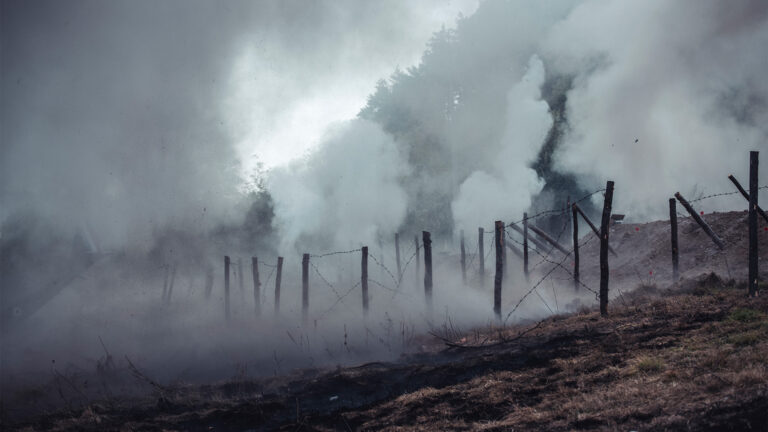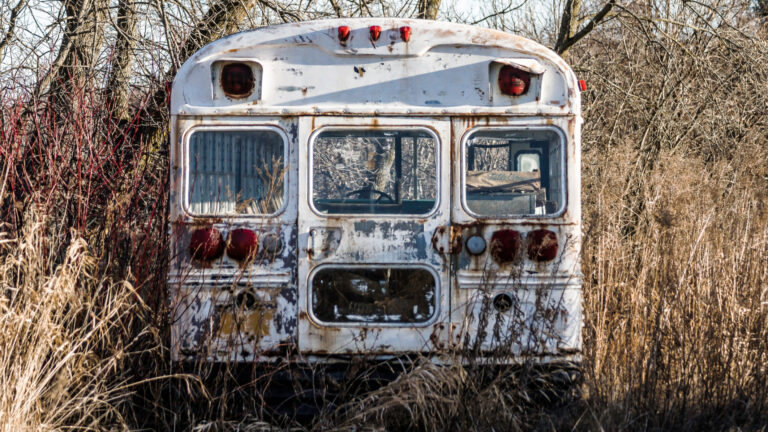In the fall, multiple listeners to my podcast Reconstructing Faith sent me a clip from season 2 of Loki, one of the shows from Marvel Studios now streaming on Disney Plus. Loki involves thought experiments and ideas common to the sci-fi genre, including time travel.
The show raises a question about institutions and their importance—and how we should respond to injustice and failure. It’s a debate between those who believe the only way forward is deconstruction and those who work for reformation. That’s what’s at stake in a conversation between Loki and Sylvie in season 2, episode 4. Sylvie asks, “What if you’re wrong? What if you’re wrong to believe that this place can be any better? . . . It would just be easier to burn this place down and start from scratch.” Loki replies, “Sure. Burn it down. Easy. Annihilating is easy. Razing things to the ground is easy. Trying to fix what’s broken is hard. Hope is hard.”
If there’s a takeaway from the second season of Loki, it’s not just that it’s better to be a reformer who wants to preserve and improve the institution, to make it better. It’s being aware that the methods you use for preserving an institution can go horribly wrong, as we’ve seen in many cases where—out of a sense of obligation, maybe even concern for the church—people defend the indefensible or excuse the inexcusable. Institutional renewal, rightly understood, requires personal sacrifice.
‘Reconstructing Faith’ Season Two
This desire to reform and rebuild is central to the second season of my podcast Reconstructing Faith. All 10 episodes are now available for streaming, each focusing on the formidable obstacles that stand in our way as we strive to rebuild the church’s witness in our time. Here’s a quick rundown of the episode topics.
1. Sledgehammers Don’t Build Anything
The continuing decline of institutional trust represents a seismic shift in our culture and society today. Some of that distrust is warranted. But some comes from an overly idealistic expectation of what institutions can provide and from the acids seeping into all areas of our culture, slowly dissolving the structures of the past. How do we rebuild in the aftermath of so much institutional turmoil and destruction?
2. The De-churching of America
Recent research shows about 15 percent of American adults—that’s 40 million people—have stopped going to church, and all this within the past 25 years. It’s a drop that has affected every region in the country, every theological tradition, every age group, every ethnicity, every education level, every income bracket. This episode examines what rebuilding looks like in the aftermath of this massive cultural decline in churchgoing.
3. Boys to Men, for Mission
What happens in a society where markers of manhood—the passing from adolescence into adulthood—become obscured, where men stagger forward without mentors or friends? What happens to a society that pathologizes competition, achievement, roughness, and the aggression required to protect the weak or pursue what’s good? How does it make sense to push back against toxic expressions of masculinity without a clear picture of actual manliness, a positive vision that shatters the caricatures?
4. The Secret Catastrophe
More and more commentators speak openly about the social and mental health consequences of porn: the degrading nature of warped expectations, the ever-more-transgressive practices, the normalization of violence, and the dark underside of human trafficking. The pervasiveness of pornography affects the church as well—young people and old, men and women.
5. Gender Sanity in a World Gone Mad
There will be no avoiding conversations about sex and gender in the days ahead, and, as Christians, our starting place must be our convictions about reality. When the world is falling en masse for a bold and terrible lie, the most important and compassionate thing the church can do is uphold the courageous and irrepressible truth. How can we best present the Bible’s vision of the body as good, as a gift, in a time of radical individualism, digital reinvention, and technological promises?
6. No One Knows What’s Real Anymore
AI is the most powerful predictive tool we’ve ever created. What will happen when, in the future, it becomes even harder to discern truth from falsehood, human fingerprints from AI creations, when we no longer agree on common narratives because we’re living in parallel online, AI-influenced universes? What do unity and division look like in the church when these problems arise? And how will we address some of the ethical questions that arise?
7. The Spiritual Burnout Society
For the past few years, sociologists and journalists have been describing millennials as “the burnout generation.” Now, there are reports that burnout and stress are on the rise with Gen Z as well. And then there’s the reality of spiritual burnout: the inability to feel the presence and power of God, a loss of desire for spiritual things. Burnout isn’t just a pastor problem. It isn’t just a workplace problem. It’s a spiritual problem, and this challenge affects the church.
8. After the Worship Wars
In the latter decades of the 20th century, many churches across the country shifted from a formal style of worship, with traditional and classical music, to a more informal style, with praise choruses and rock-influenced instrumentation. Today, we may be well past the worst of the worship wars, but we’re never going to be in a season where discussions over what we do as gathered members of the body of Christ go away.
9. Family Breakdown and the Family of God
Challenges to family life aren’t new. But the challenges in our day have multiplied. And these problems aren’t unrelated to the difficulties we face as God’s people, especially since we see in the New Testament how the church is to be the family of God. We are in relationship to one another as brothers and sisters, as fathers and mothers in the faith.
10. Better Together: Denominations and the Hope of Evangelical Renewal
Rebuilding requires sacrifice . . . a dogged commitment to seeing the task through. If this is the case for churches, it’s also the case for families of churches, for networks, partnerships, conventions, and denominations. How can we look beyond our congregation to the health of the evangelical movement as a whole?
Find a Place on the Wall
You may wonder if there’s anything you can do when so many of these obstacles seem insurmountable. Let me encourage you to find a place somewhere on the wall. Like the men and women in Nehemiah’s day, who were tasked with rebuilding the fallen wall around Jerusalem, find a place on the wall where you can be part of the restoration. No, you can’t do everything. But everyone can do something.
Which challenge to the church’s witness do you feel most passionate about? Where might your gifts match up with the church’s needs? Where could your strengths match up with a church’s weaknesses?
Restoration emerges in the crucible of faithful service. Remember, tearing stuff down is easy. Trying to fix what’s broken is hard. Hope is hard. Let’s not take the easy route of just pointing out all that’s wrong. Let’s be part of making things right. And let’s trust that God will be with us as we navigate through the stormy waters.
If you would like my future articles sent to your email, as well as a curated list of books, podcasts, and helpful links I find online, enter your address.

















